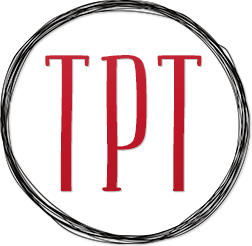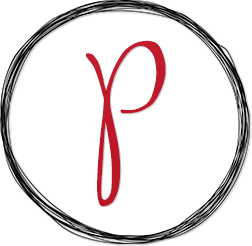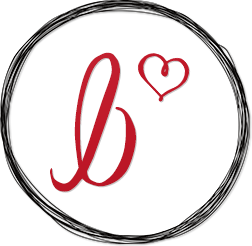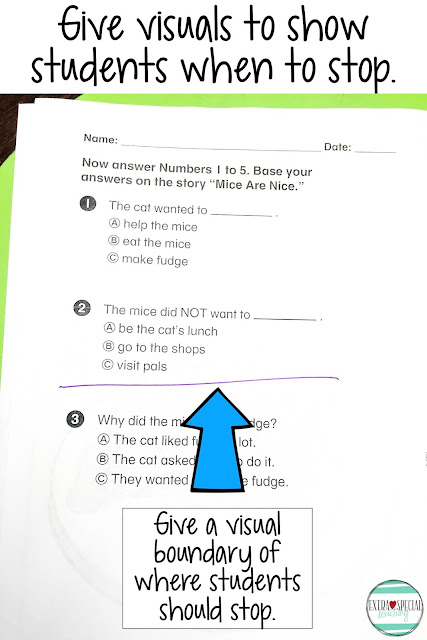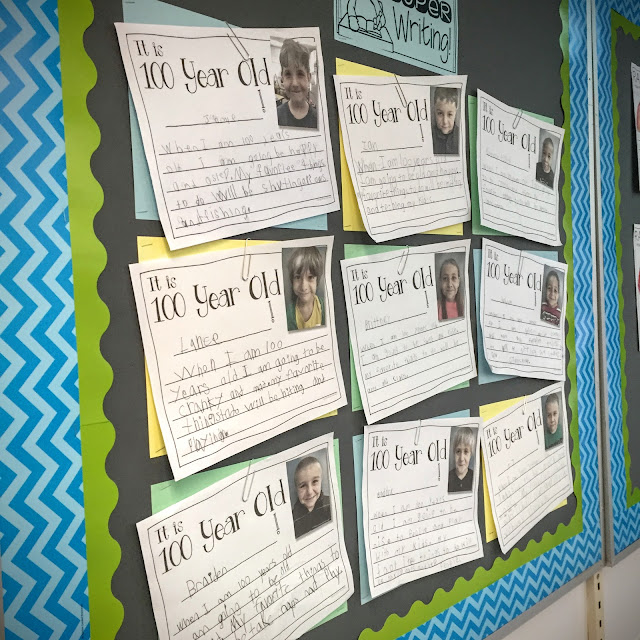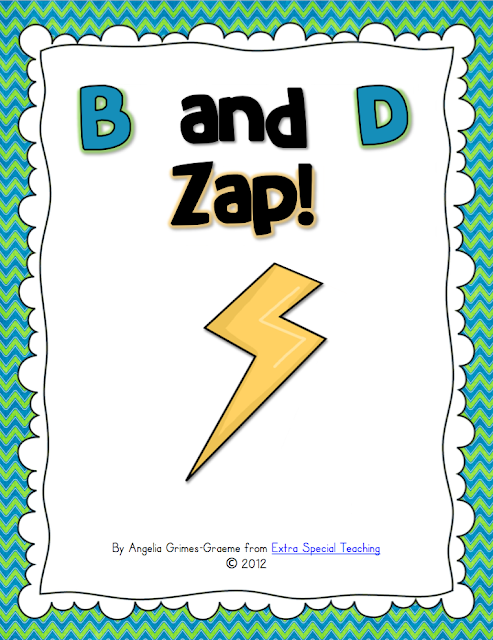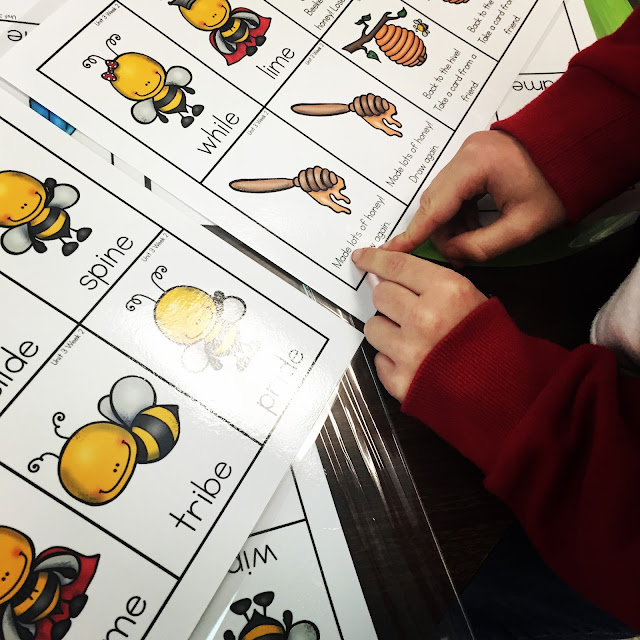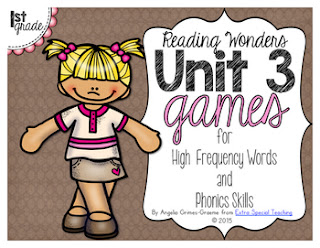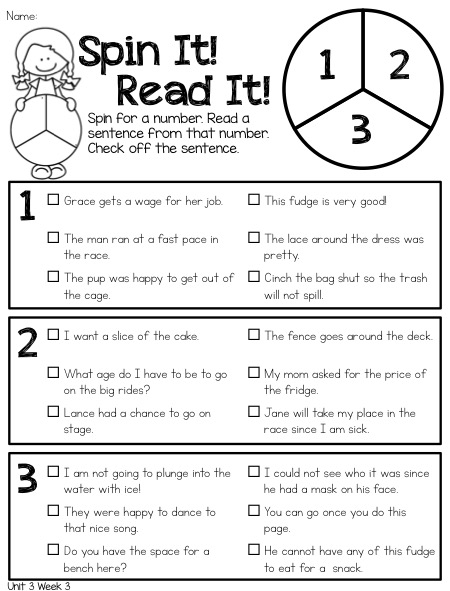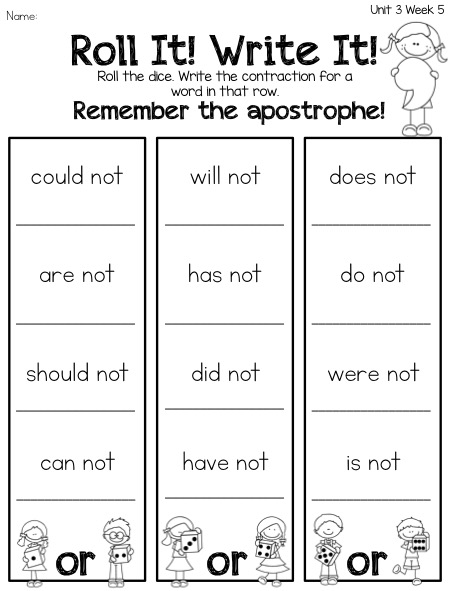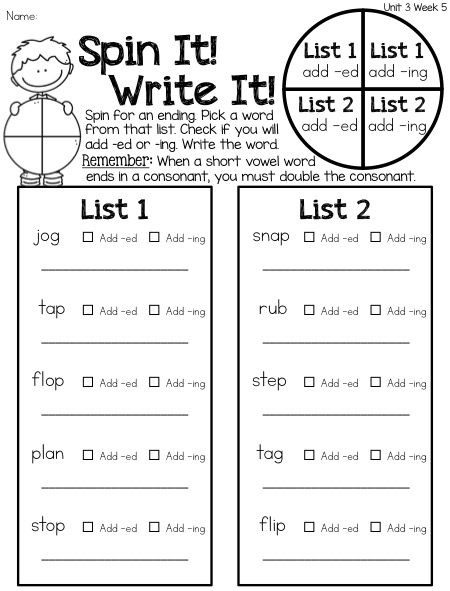Now that we're back from Christmas break, we've started Unit 3 in the 1st grade Reading Wonders series. Our district requires us to use this curriculum and expects us to follow the pacing and assessments from Reading Wonders. Even though I teach special education, I am still expected to teach grade level material and use our curriculum. Although, I do go at slower pace than my gen ed counterparts.
There are things I like about the series (such as the readers and decodables from WonderWorks), but there are areas that I feel like Reading Wonders doesn't do a great job with. The practice pages are very boring and dry, but my students really need the practice!
Here are some of the materials I will use to supplement Unit 3.
At the beginning of each unit, I pull out all of the high frequency word cards for our word wall.
I love how our Word Wall is color coordinated. This makes it easy to tell students to look for the pink card under Oo to find the word of. When students are helping their friends find words, they know to tell them what color card they should look for.
Each word card is labeled with the Unit and Week to make for easier storage and organizing. You can check them out {
here} or by clicking below.
Every morning, we start our day with Corinna from
Surfin' Through Second's morning work. I love how the repetition gives my students a sense of independent but also allows them practice valuable skills.
For morning work, I use the pages that are several pages behind where we are in the series. This way I know the students have been taught the skill already, and it gives them a spiral review of previously taught skills. Here's a sample page of what my students were working on before Christmas break.
You can check out Corinna's morning work by clicking {
here} or the picture below.
My students love playing games! They are so excited about playing games that they don't even care that they're learning. I've made games that go along with each phonics skills and a comprehensive unit game of the high frequency sight words taught.
I use these games during small group, with my RTI intervention groups from the gen ed classrooms, as a way to reengage students when I see them slipping, or just as a quick time filler.
My students are so excited to see what the special cards are for each game. This little guy had to find out the special cards even though they weren't cut out yet!
Every game comes with a recording sheet for students to get extra practice.
You can check out the games for Unit 3 more by clicking {
here} or on the picture below.
My students need a lot of practice with the weekly Wonders skills, but I also need it to be easy for me. I created these Print It! Practice It! pages to help my students AND me! I use these with the students in my classroom and the RTI students that I see from the gen ed classrooms.
My students will do anything to use a spinner or roll dice! When students play, I typically put them in partners. Their partner is required to listen to their friend read and double check that they correctly read the word or sentence. I keep an eye on all my partners, record errors or growth as they read to each other, and help out when students have trouble decoding words.
Putting the pages in page protectors makes it easy for me to pull them out of a binder and have an easy activity ready to go at a moments notice.
Each week includes several pages of practice for decoding the weekly phonics skill, editing sentences, and practicing the grammar skills.
These are some of the pages we will be using in upcoming weeks.
Unit 3 Week 3's phonics skills focuses on the Soft C and Soft G patterns. I love the Spin It! Read It! pages that include reading phonics patterns in a sentence.
I've really been working hard to make sure my students understand the different phonics rules that go with each pattern. I've made a point to describe the pattern and refer to the pattern and rules during our everyday talk. I love when I hear them stating the rules to each other.
Contractions are so much more fun if they can roll a dice while they're practicing!
Adding inflectional endings are so tricky! This is just the kind of practice my students need!
You can see more of the pages included in this unit by downloading the preview file that can be found {
here} or by clicking the picture below.
There you have it! All this practice should really help push my students toward mastery of the skills in Unit 3!


